Gardenia is a beautiful refined room plant that requires special care and high attention from the side of the flower. Glossy leaves of dark green color, thick compact crown and delicate white buds resembling roses, with a light pleasant aroma, cannot but attract attention. At the same time, to "see" such beauty, you will have to work a little. The demanding and capricious room flower needs special conditions of detention, knowledge and application of which will allow you to grow a beautiful home plant on your windowsill. So, how to properly care for gardens? When do you need to transplant the flower? How is the perennial prolonge? All this is in this selection of material.
Gardenia at home, plant description
Gardenia flower is a genus of tropical plants from the Marines family. This genus got its name in honor of the American botany-naturalist - Alexander Garden. In nature, there are both shrubs and real trees of Gardenia. More than 250 species of representatives of the genus Gardenia are known. A plant in subtropical forests of Japan, India and China grows. Thanks to its beauty and tenderness, Gardenia has won love and admiration for amateur flower still in the 18th century.
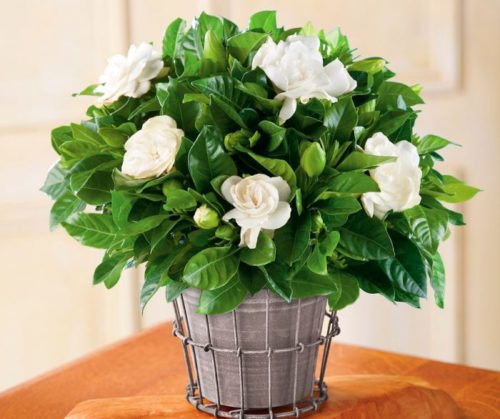
As a room culture, one species is grown - "Gardenia Jasmine-shaped". Consider the botanical features of this amazingly beautiful flower.
- Rooming Gardenia is an evergreen low (45-50 cm) a shrub with a strong rigid stem and branched shoots.
- Gardening leaves glossy, oppositely located, dark green.
- The main decoration of the plant, snow-white gardens flowers, are located in the sinuses of the leaves one by one. In shape they resemble miniature fluffy roses.
- Gardenia in color is quite a long time: from July to October. Under favorable conditions, during this period of Gardening, jasmine-shaped "sleeping" with buds and fragrant terry flowers.
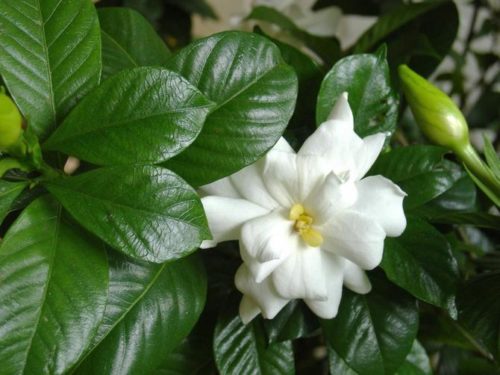
- The fruit in Gardenia is a sedentary, multifamous. The average life cycle of the room plant under good care is 6-7 years.
- The elegant and spectacular flower of Gardenation is able to decorate any interior, giving it a certain chic and sophistication.
- Gardenia jasmine-shaped, grown at home, is considered a capricious and demanding culture. The plant needs abundance of light, heat and high humidity.
- Gardening Fumbn Reviews indicate the need to strict compliance with all rules for the plant content. Otherwise, the home flower will not be able to please others around their elegant bloom and can just die.
- The flower does not like to change the habitat, temperature regime and has a number of requirements for content conditions. Observing all the rules and recommendations on care, it will be possible to admire the beauty of this exquisite flower for a long time.
- Gardenia, especially its fruit, is considered poisonous. Therefore, after working with the flower should be thoroughly wash your hands.
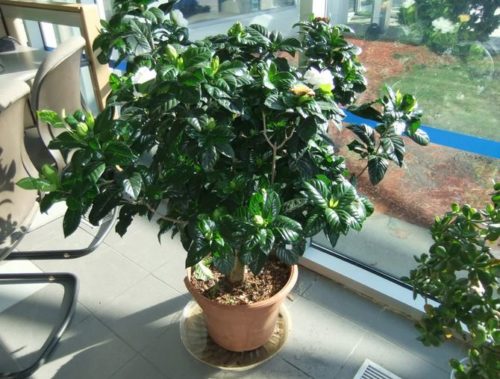
Application of gardenia
- Blooming gardenia in a pot - one of the most decorative and attractive houseplants. White "roses" with its unique delicate jasmine aroma made culture a favorite of many gardeners.
- In addition to its decorative qualities, gardenia has healing properties. Of its flowers, fruits and even roots of preparing decoctions, tinctures and compresses. Drug solutions treat skin diseases, stomatitis and mastitis. The infusion of fruit used in fever and broths based on roots are useful in dysentery, nephritis, bloody vomiting and hepatitis. Chinese medicine recommends this culture as a remedy for headaches, diseases of the respiratory system, insomnia and even severe fatigue.
- gardenia often used in wedding floristry. Terry white flowers adorn the buttonhole of his coat are made wedding bouquets and a variety of decorations for banquet tables and halls.
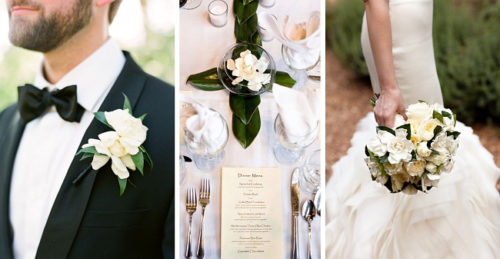
Gardenia care in the home
Gardenia home require special conditions of detention and painstaking care. As noted above, the plant does not like sudden temperature changes, place of "residence", drying and, conversely, excessive moisture.
Consider the key demands of caring for a potted flower.
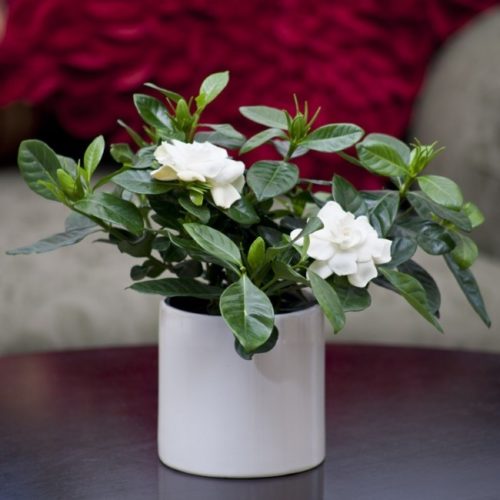
Lighting gardenia at home
- Length and abundance of flowering is directly dependent on the organization of optimal lighting houseplant.
- Photophilous plant gardenia needs a good, full coverage throughout the day. However, on a hot summer afternoon flower should protect from the scorching sun, otherwise, gardenia home can lose not only the buds, but leaves.
- Permitted make a gardenia in the summer fresh air, for example, on a terrace or balcony. The main condition - to provide indoor plants and well lit, but sheltered from drafts place. On colder days, the flower will have to enter the premises, as hypothermia is detrimental to the development of perennial.
- The windows on the south side pots of flowers will need to pritenyat thin curtain on the northern windows - provide supplementary lighting. The most favorable for the gardenia room will not be shaded windows on the west and east sides.
- In winter, pots with flowers can be rearranged on the southern windows or leave in the same place, providing additional lighting with fluorescent lamps. It is important to remember that the plant is very sensitive to changes in the degree of illumination.
- It is not necessary to touch and rearrange the flower during the bookmark and formation of buds, otherwise they may simply be popped. During this period, experienced flowers do not recommend even twist the pot in different directions.
- The lack of lighting also negatively affects the development of the plant. The flower can reset buds, but never bloom.
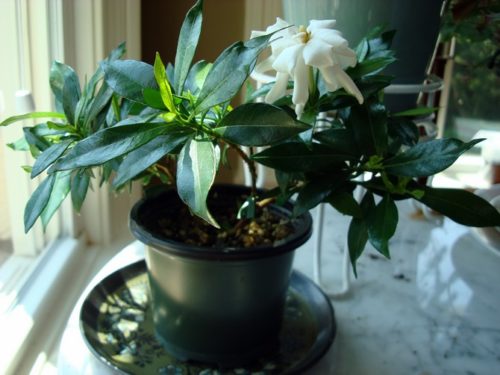
Temperature Mode for Gardenia at home
- In addition to good lighting, the thermal-loving Gardena needs moderate warmth.
- The optimal temperature for the room plant is the mark at 22-24 0With in the warm season, and 18-20 0C - in winter. The room temperature in the winter should not be below 16 0C and higher 22 0C. At a higher temperature, in winter, the flower will not be able to form floral kidneys, which means there will not bloom.
- At low temperatures (below 16-18 0C) Great risks of hypothermia and reinforcement roots.
- In any case, it is impossible to put it with sharp fluctuations in temperature, it can provoke the absence of flowering at all.
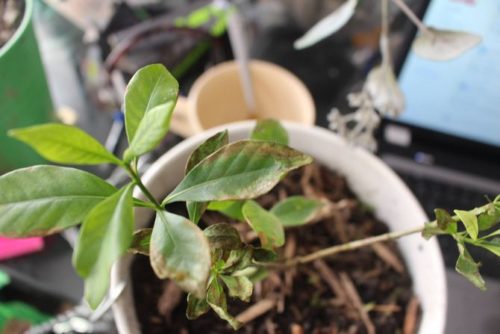
Air humidity for Gardenia at home
- Increased air humidity is important during the plant bootonization. In the dry air, buds slow down growth and often fall out.
- During this period, the leaves of the plant spray from the pulverizer without affecting flowers and buds. Water for spraying should be warm, estimated.
- The spraying procedure is best to spend in the morning or in the afternoon so that in the evening the leaves of Gardenation managed to dry.
- Daily spray the crown of the plant is necessary until the dissolution of buds, after which the water procedures stop. This is due to the appearance after spraying on the snow-white petals of the garment of yellowish-brown spots, negatively affecting the decorative form of the flower.
- To maintain a high humidity, the pot with a flower is best put in the pallet with a moistened clay or sphagnum. The main condition - the bottom of the pot should not touch the water.
Watering Gardenia at home
- Garia favorably belongs to regular abundant watering during the period of active growing development (spring and summer). At this time, the soil in the pot should always be slightly wet.
- In the cold season, the plant is watered in 2-3 days after dried up the top layer of the soil. In winter, the irrigation rate is reduced.
- Room Gardenia negatively applies to the soil is dried or, on the contrary, to the constant stagnation of moisture in the roots.
- Water for watering is used soft (distinguished) and not cold. Good to use boiled or filtered rainwater.
- The bedroom flower is watered on top, and, approximately, after 15-20 minutes, they drain excess water that appears in the pallet.
- Flowers recommend 2-3 times a month to water the plant with acidified water (4-5 drops of lemon juice per liter of water) or Nasty peat. After this healing procedure, the painting of the leaf of perennial becomes rushing, and flowering is abundant.
Fertilizer Gardenia at home
- Abundant bloom and the full development of Gardenation directly depend on the fertilizer of the plant.
- Fertilize the flower follows during its active vegetative development - from March to August, every 2 weeks. In winter, the Gardening in the feeding does not need.
- Liquid feeders are used as fertilizers, designed for flowering indoor plants (for example, orchids). In this case, the dosage of comprehensive fertilizer is better to reduce the twice as recommended by the instruction.
- The main condition in the selection of fertilizers for the Gardenia - feeding the chemical elements, while simultaneously increasing the acidity of the soil.
- To normalize the level of acidity, the soil is twice in the summer shed solutions of glands containing iron. Do not choose mineral fertilizers containing calcium.
- The readiness of adult guide to the adoption of additional nutrient elements (fertilizers) is determined by the development of its root system. If the roots rummaged enough and completely occupied the bottom of the flower pot, it can be made in the soil mineral or organic fertilizers. Ideally, such feeders are best alternating among themselves.
- When the first signs of chlorosis are found (the leaves are pale and yellow) in the feeding it is necessary to add preparations such as "ferovit" and "chelate of iron".
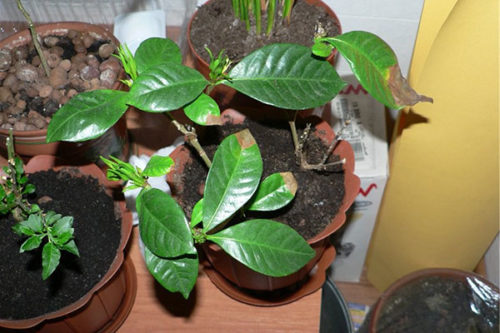
Gardenia Change at home
- Room flower Gardenia does not like to transplant and excess injury. Fragile, thin roots are easily damaged and then restored for a long time. Therefore, when transplanting the plant, its roots cut up quite a little bit, so that they quickly can grow.
- Pereparing the indoor culture in the spring, as a rule, 2 years after landing. To do this, use a larger in the size of the flower pot.
- It is categorically not recommended to transplanting the flowering gardening, the plant will reset the resulting buds.
- During the transplantation to a new pot, it is important to provide a good drainage layer (1 \\ 3 part) plant. The drainage uses fine crushed stone, pebbles or clay. Drainage will reduce the plant from water stagnation and possible reinforcement of the roots.
- After drainage, the flower pot fills the soil mixture. It is absolutely not suitable for the garment, the plant prefers acidified soil, with pH 4.5-5.5. Perfect for room gardening light soil mixture designed to land azalea. If you prepare the soil yourself, then there will be equal parts of sand, delicate, sheet, conifer, and peat ground. The prepared soil is better to rolling in the oven, heated to + 100 ° -130 ° C. The cooled disinfected ground is ready for further use.
- If the ordinary soil was used to land the jasmine-shaped garment, it should be acidified. To do this, a little lemon juice (a few drops per liter of water) add to water during watering. The surplus of acid is also undesirable, otherwise the leaves of the garment will yellow and crushed.
- The best transplant method is a transsment of plants. The flower is neatly removed from the pot, slightly shaking the soil and leave in a solution of the biostimulant for 15-20 minutes. After that, the plant carefully (trying not to injure roots) divide for several shoots. After planting the garment to a new flower pot, the soil is watered with a biostimulator and put the flower into a warm, but shaded place. Similar gentle conditions will help you to experience stress after transplanting.
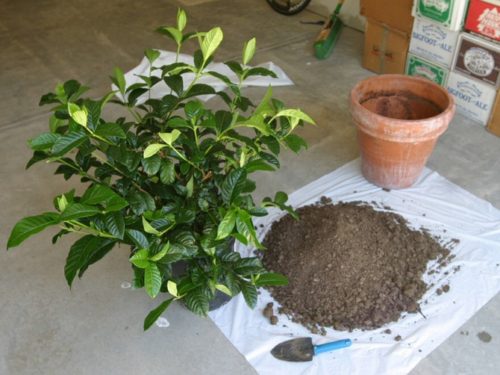
Crucification of Gardenia at home
- Gardenia grown at home needs regular trimming of shoots. First of all, the shoots with flashing inflorescences, patients or weak cuttings are trimmed. Also shocked healthy shoots of Gardenia.
- Pruning is carried out after the flower completely blews. The shoots are cut into half or two thirds of the length of shoots.
- In the spring, during the period of initial vegetation, the fascination of the tops of young shoots is carried out, which allows you to stimulate the branching of the shrub, the formation of lateral shoots and a laying of flower kidney. This technique allows you to get a compact and fluffy bunch of garment.
- Cropped garardine cuttings can be used as a planting material for cultural reproduction.
- If desired, it is possible to "turn" to the Gardenia in the strambet tree. For this, the plant is tied up to the vertical support, remove all the side shoots. When the tree reaches the desired height, pinch the growth point, and the barrel is cleaned of foliage, forming a spherical crown.
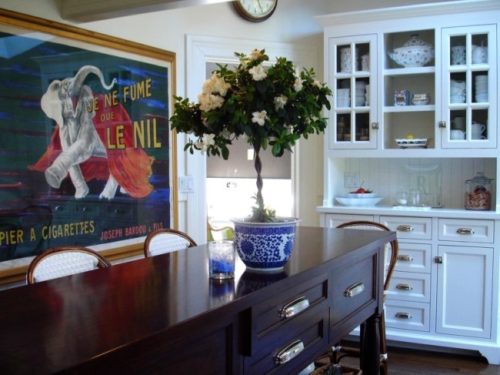
Diseases and pests of Gardenia at home
- Despite the fact that Garia "lives" in the apartment, and not on the street, it can be attacked by pests such as: TLL, TRIPS, BLACK, CULT TICK.
- If the plants appear signs of the vital activity of the above insects (web, gray or brown spots on a sheet, twisting leaves, foliage stickiness) - the flower should be treated with insecticidal preparations. Such insectoacaricadides of a wide range of action are suitable: "Phytoverm", "Decis", "Aktellik", "Intavir" and others. As a rule, it is sufficiently one-time treatment of the plant, if the pest progresses - the procedure should be repeated (but not more than 3 times ) After 1-1.5 weeks.
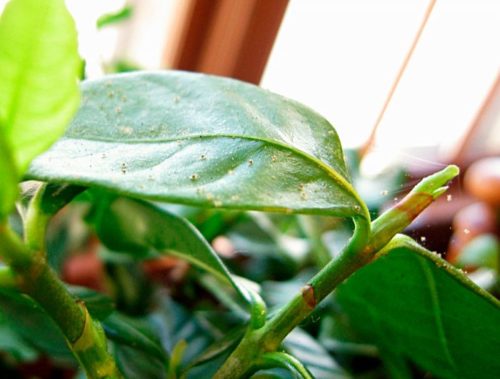
Difficulties of Gardening at home
Gardening is often conjugate with a number of problems, as a capricious flower requires compliance with all the rules of content and care. Consider the most common difficulties in the cultivation of this room culture.
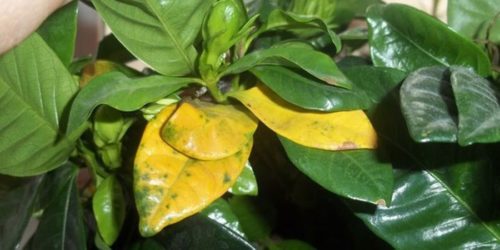
- The leaves are pale, the flower slows down growth, there is no blossom - lack of lighting or nutrients.
- Yellow divorces appear on the leaves - the insufficient acidity of the soil. The soil must be acidified.
- Gardening turns, the leaves are withering, buds and flowers fall apart - reduced air temperature in the room.
- Gardenia turns yellow, the leaves fall apart - the lack of watering or watering with cold water. Another reason for the yellowing of foliage is the temperature regimen drops. If only the upper leaves are yellow - it means that the soil substrate is oversaturated with lime.
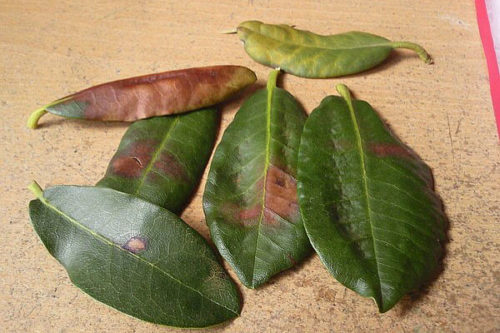
- Buds and flowers are tremendous - low air humidity, changing the place of flower pot, sharp drops of temperature, drafts, lack of light.
- The leaves are black and fall - non-compliance with the conditions of irrigation (deficiency or oversupply).
- The soil is covered with a whitish touch - for irrigation, rigid water was used or there is an overabundance of mineral fertilizers.
- Buds do not flourish - lack of light or low soil acidity.
- Gardening leaves dried up - excessive moisturizing, drafts, frostbite.
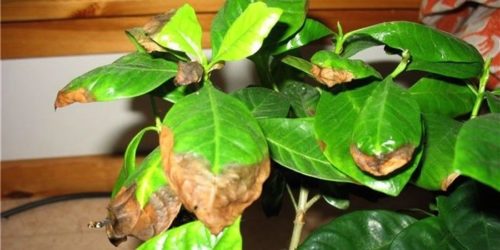
Gardening reproduction at home
Gardenia, like most other plants, is multiplied by the generative (seeds) and vegetative ways. Most often, Gardenia is bred by shifting.
- For this purpose, the tops of the semi-respected shoots are about 10 cm long.
- The cuttings are harvested in February (March) or in August (September), after which they are rooted in the soil substrate using rooting stimulants. At the same time, before planting the tip of the cutter is loose in a biostimulant powder.
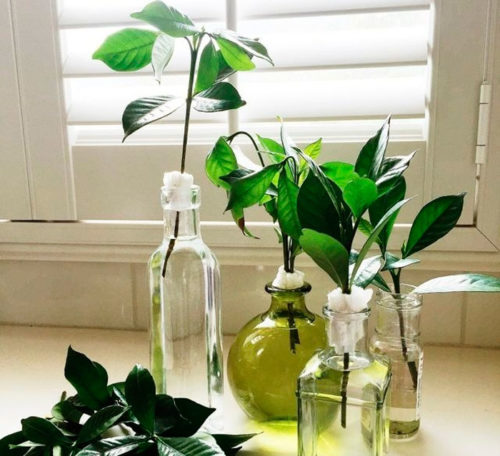
- Soil for planting cuttings is prepared from peat, sand and coniferous land.
- For successful germs, mini-greenhouse is made. To do this, you can cover the shoots with a glass or plastic can.
- Care of cuttings includes soil moisturizing, maintaining a constant air temperature (about +20 0C), ventilating the greenhouse.
- The cuttings are rooted hard and long. In the case of successful rooting, the cuttings, which have reached 15 cm, pinch (for bush) and transplanted into the flower pot.
- Peresinding the cuttings should be very careful not to damage the thin roots of the plant.
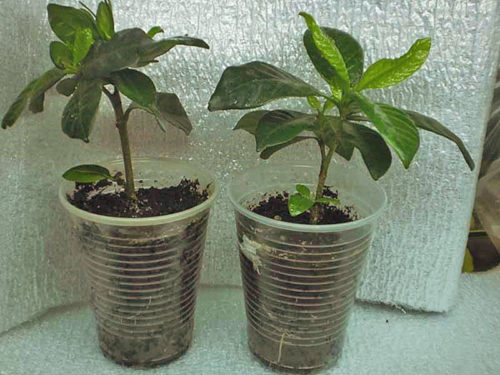
The seed method of reproduction at home is practically not used, since this process is considered very complex and time consuming. At the same time, there is a very low percentage of positive results.
- Gardening seeds are quickly losing germination, therefore are not subject to long-term storage.
- Before planting, fresh seeds are soaked in a solution of growth biostimulator for 2-3 hours, after which they are sown in a light loose substrate with an acidic reaction of the medium.
- After watering (from a finely dispersed pulverizer), the crushing container is covered with a film and placed in a warm place for germination.
- Care of germinating seeds is regular moistening of soil and ventilation.
- The first shoots appear about a month after sowing. Seedlings will need, except watering, soil looser and overcast days.

- In the phase of the formation of 3-4-leaves, the seedlings are peeling into separate containers.
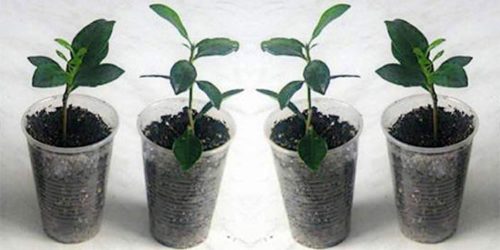
Thus, Room Gardenia Jasmine - an initial and whimsical home culture, requiring special attention and care. The plant does not tolerate a sharp change of temperature, drafts, disadvantage or, on the contrary, the re-fulfillment of moisture, the change of the place of "living" and the scorching rays of the sun. Rooming Gardenia prefers acidic soil, soft water, moderate humidity and good lighting. Knowledge and compliance with key conditions of content will make it easily raise the elegant evergreen "Beauty" - Gardenia on its windowsill.

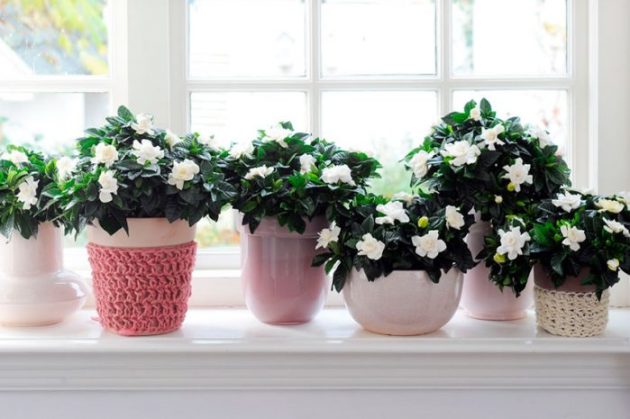
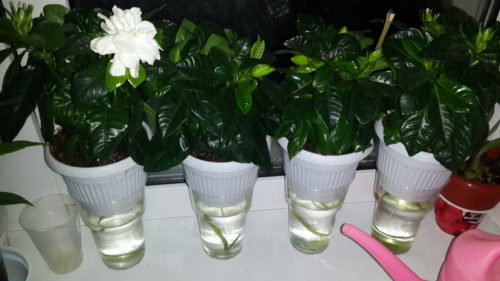
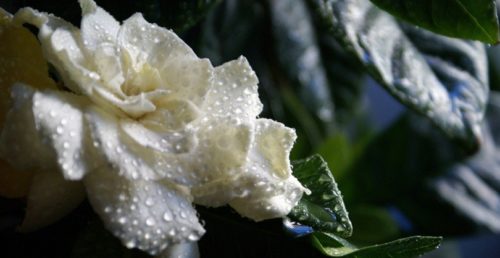
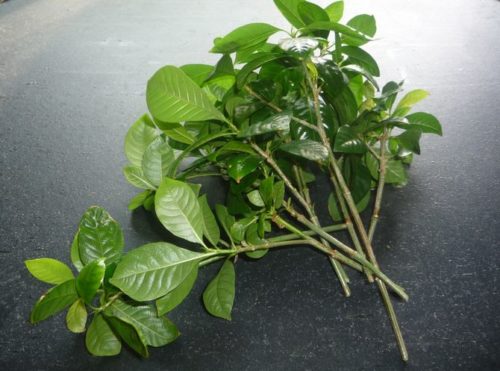
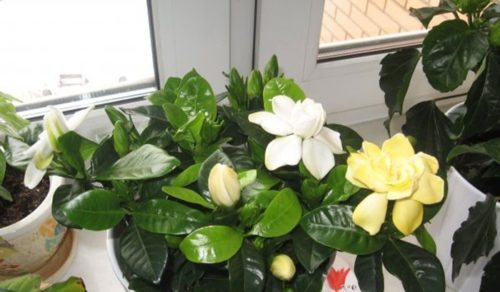
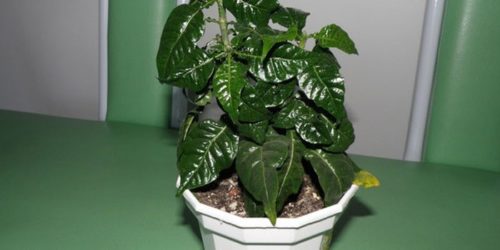
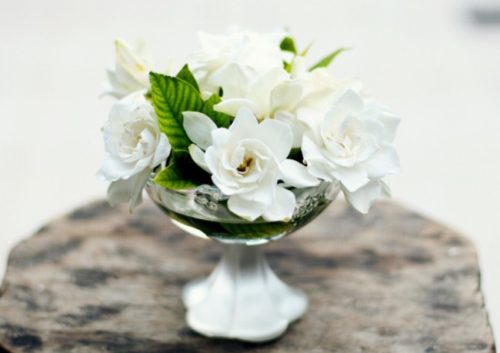
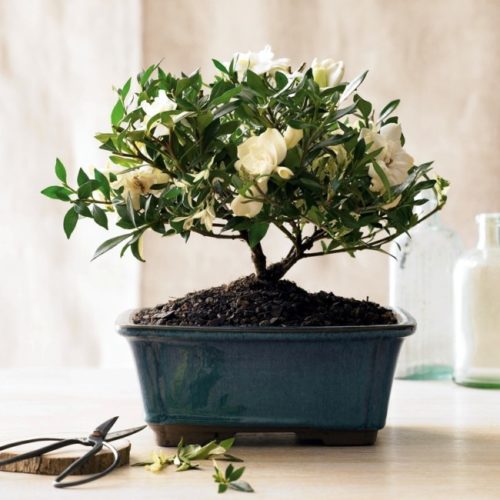
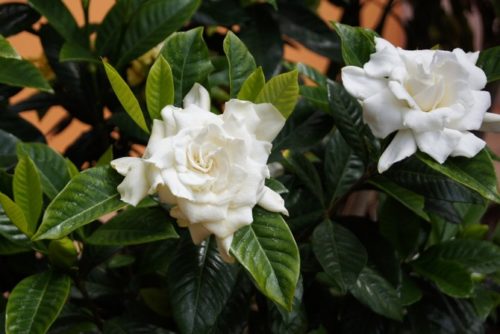
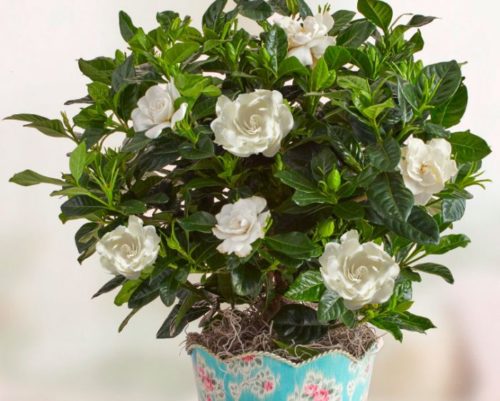
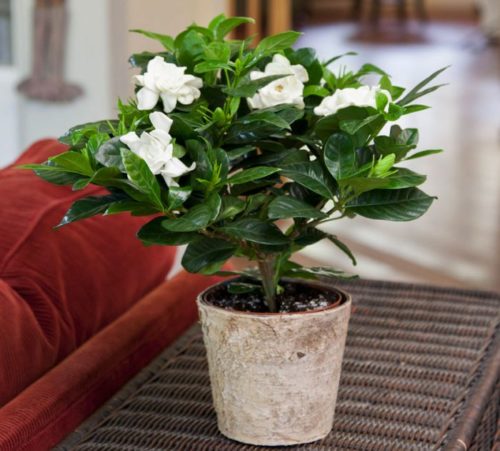
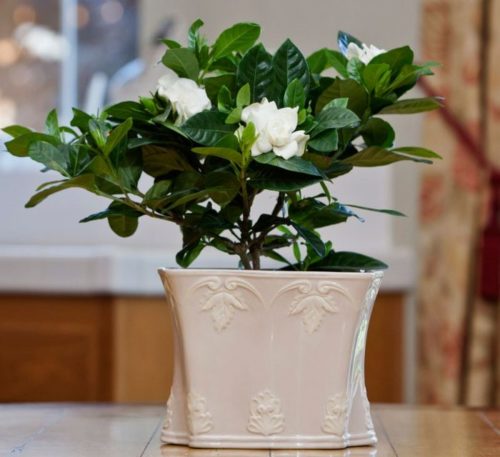

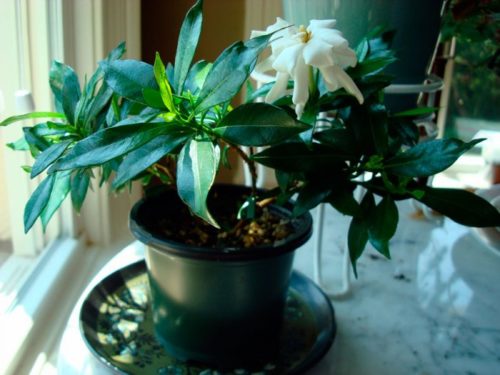
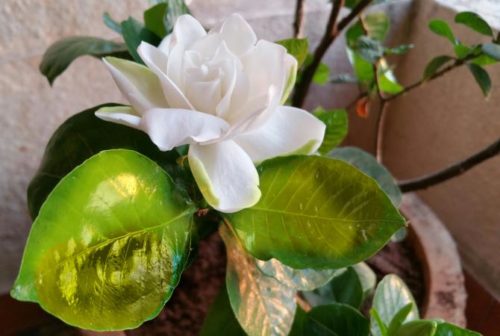
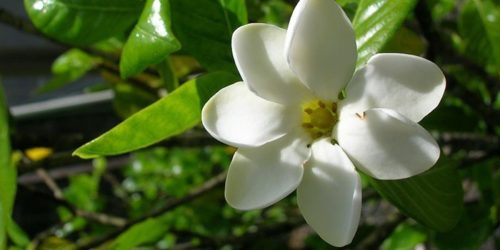












 Start a discussion ...
Start a discussion ...